- About MAA
- Membership
- MAA Publications
- Periodicals
- Blogs
- MAA Book Series
- MAA Press (an imprint of the AMS)
- MAA Notes
- MAA Reviews
- Mathematical Communication
- Information for Libraries
- Author Resources
- Advertise with MAA
- Meetings
- Competitions
- Programs
- Communities
- MAA Sections
- SIGMAA
- MAA Connect
- Students
- MAA Awards
- Awards Booklets
- Writing Awards
- Teaching Awards
- Service Awards
- Research Awards
- Lecture Awards
- Putnam Competition Individual and Team Winners
- D. E. Shaw Group AMC 8 Awards & Certificates
- Maryam Mirzakhani AMC 10 A Awards & Certificates
- Two Sigma AMC 10 B Awards & Certificates
- Jane Street AMC 12 A Awards & Certificates
- Akamai AMC 12 B Awards & Certificates
- High School Teachers
- News
You are here
Mathematical Treasure: Émilie du Châtelet’s Institutions de Physique
Best known for her translation of and commentary on Newton’s Principia, Émilie du Châtelet, also published other works. Born Gabrielle-Émilie Le Tonnelier de Breteuil, married to the Marquise du Chastellet, and mistress of the French poet Voltaire, Émilie was a mathematician and scientist in France during the Enlightenment. The following image is the title page of a revised French edition of Émilie du Châtelet’s Institutions de Physique, published in 1741 in Holland. The first edition was published the previous year, and several other editions followed. Émilie wrote this book, in which she assimilated points of view of Descartes, Newton, and Leibniz, to teach new ideas in physics to her thirteen-year-old son. Notice that her name is not mentioned on the title page of this edition. There was a 1742 edition also published in Amsterdam which was not anonymous.

The frontispiece is interesting. It shows a person (possibly du Châtelet) climbing to reach a glorious temple occupied by “Truth” depicted as a naked woman. Cherubs hold portraits at the top of the page, possibly representing Descartes, Leibniz, and Newton.
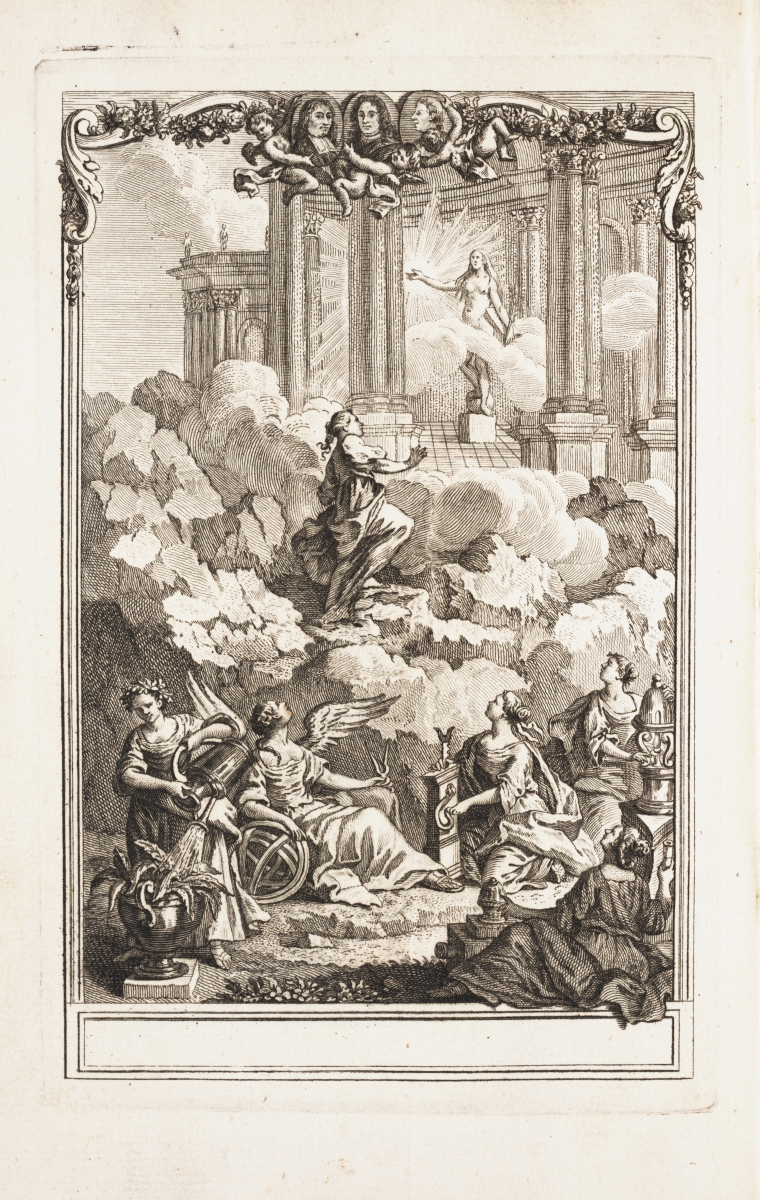
Each chapter begins with a delightful graphic exhibiting mathematics or science in some way. For example, Chapter 14 on the phenomena of gravity has a picture of a device used to demonstrate Galileo’s law of natural motion. The paraboloid apparatus involves dropping balls on a spiral track to show that each turn of the spiral is traveled in the same amount of time (isochronism).

According to the virtual Galileo Museum, there are only two such devices currently known to be in existence. The picture below is at the Galileo Museum in Florence, Italy, taken by the author while on the 2012 MAA Study Tour.
In her biography of Émilie du Châtelet, Judith P. Zinsser questions whether these chapter opening graphics tie in with the fact that Émilie wrote the book to teach her son the fundamentals of physics, since “many of the decorative illustrations at the beginnings of the Institutions’s chapters show a young boy at games and activities demonstrating one or the other law of motion: lacrosse, billiards, balancing on a seesaw, shuttlecock, riding, shooting a gun.” (Zinsser, p. 165) Images of several of these illustrations follow.
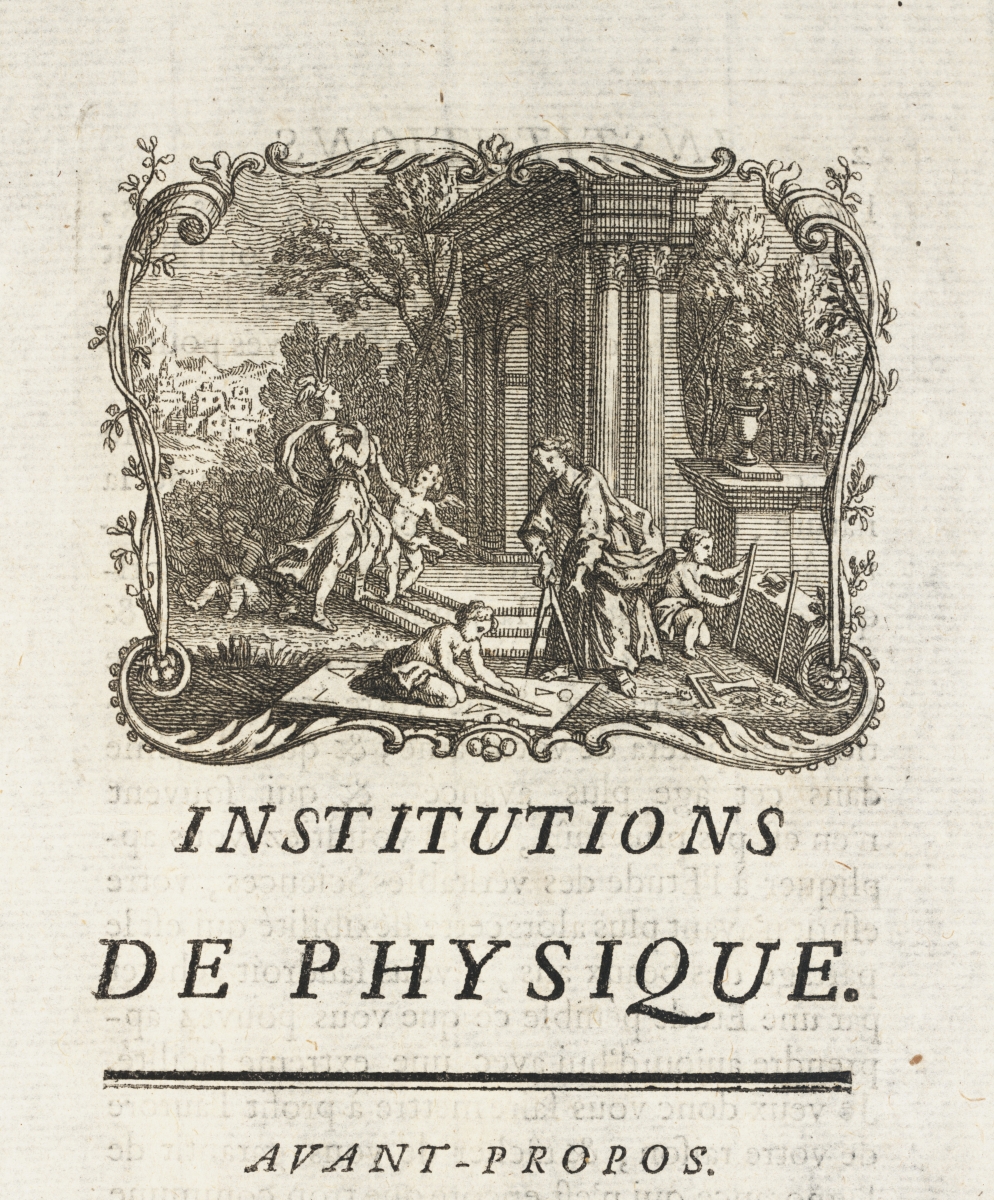

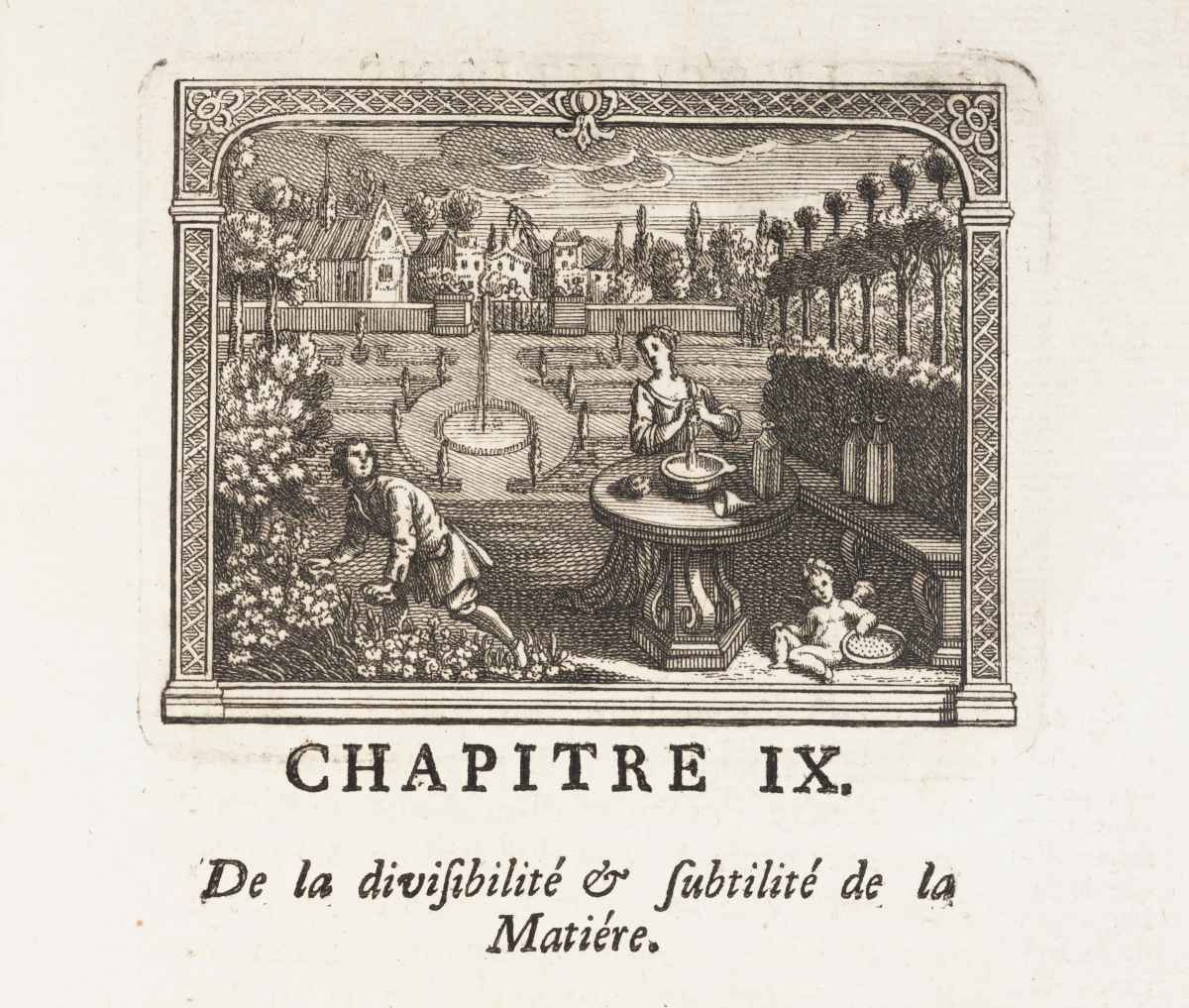
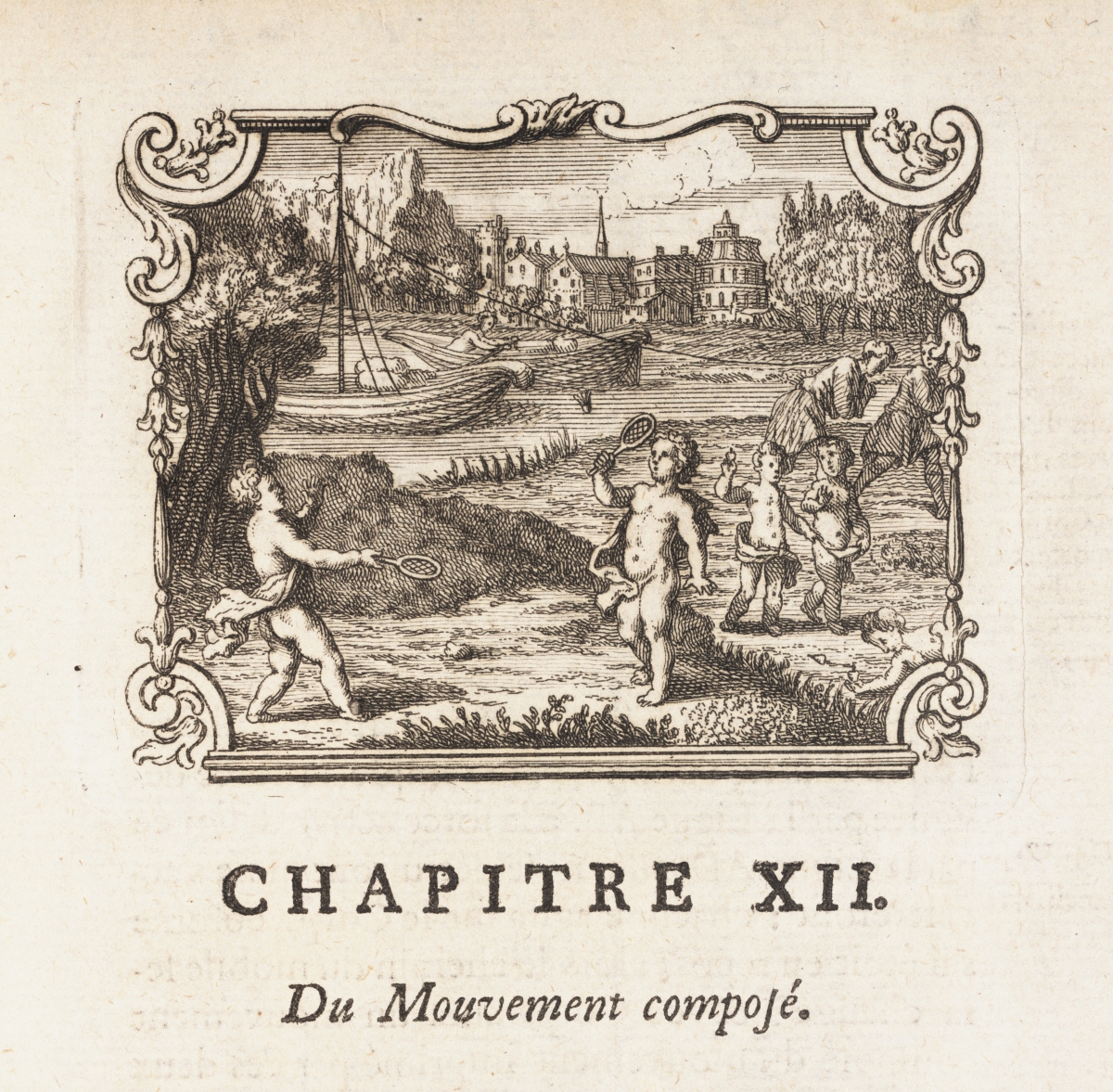

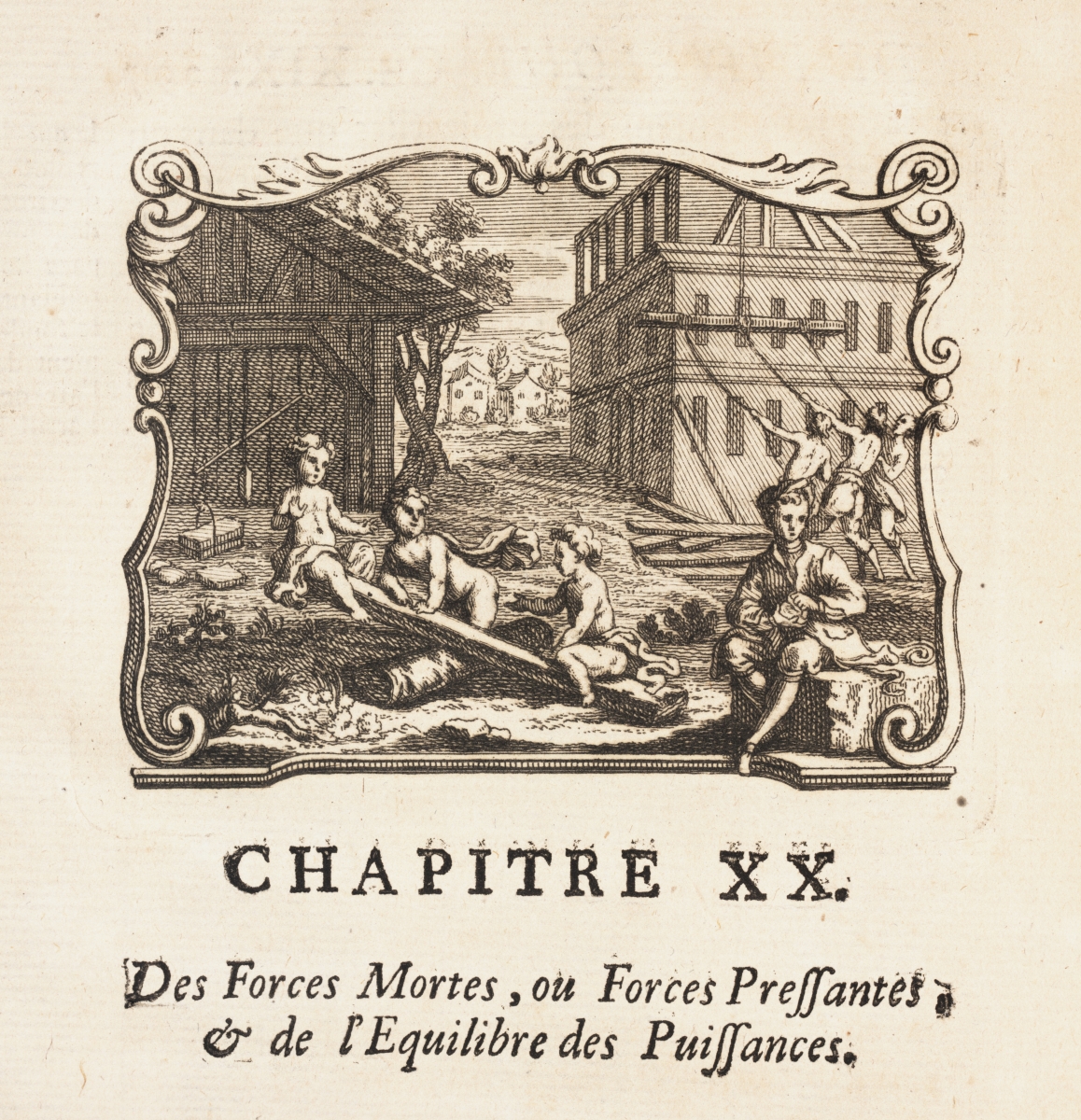
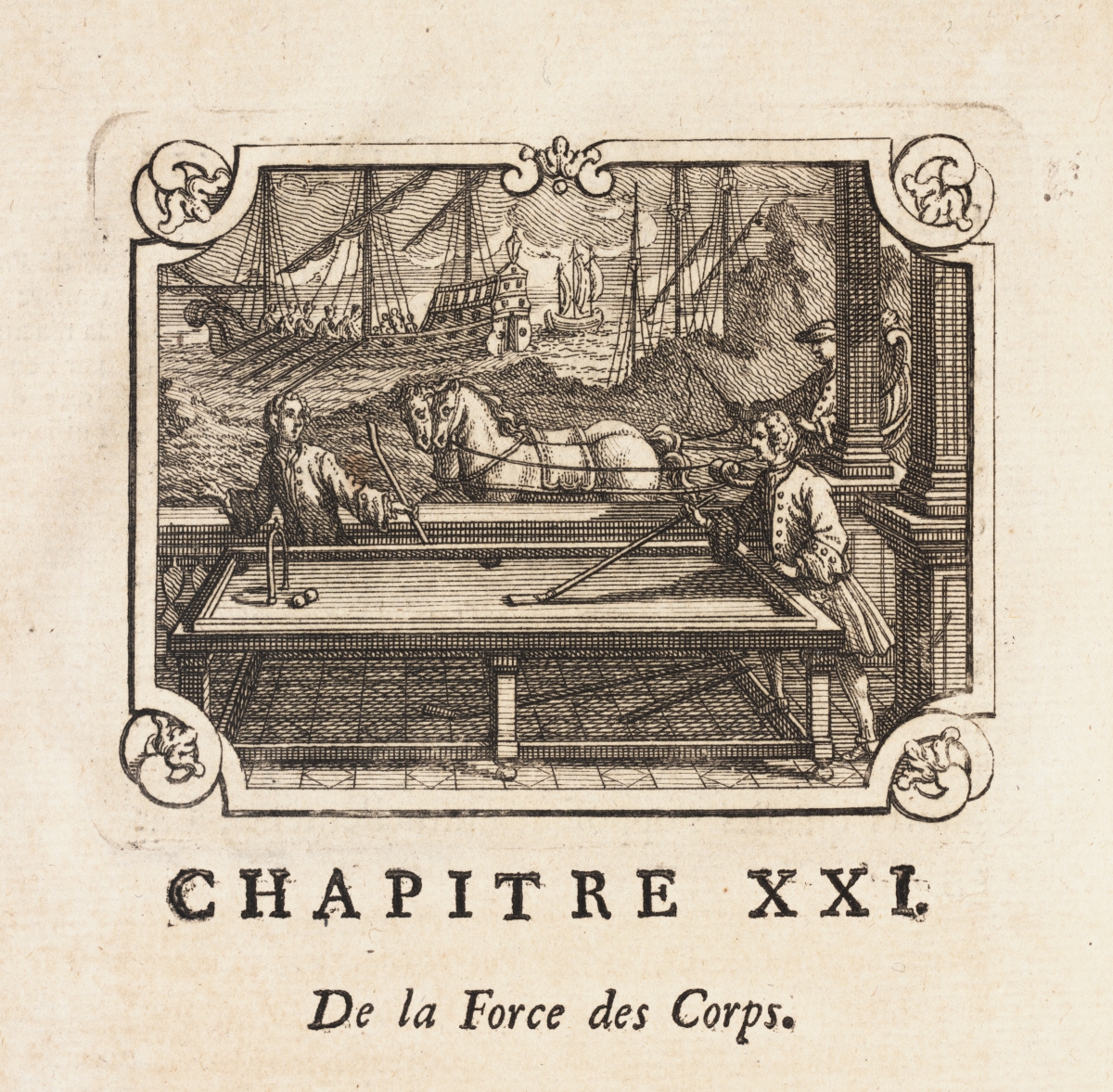
The call number for the revised 1741 French edition of Émilie du Châtelet’s Institutions de Physique is QC19.D85 1741. A digital copy is available in the Linda Hall Library Digital Collections.
Except for the image of the apparatus at the Galileo Museum in Florence which was taken by the author, all other images in this article are courtesy of the Linda Hall Library of Science, Engineering & Technology and used with permission. The Linda Hall Library makes available all existing digital images from its collection that are in the public domain to be used for any purpose under the terms of a Creative Commons License CC by 4.0. The Library’s preferred credit line for all use is: “Courtesy of The Linda Hall Library of Science, Engineering & Technology.”
For a portrait of Émilie du Châtelet, visit the Francesco Algarotti page of Mathematical Treasures.
References
Bodanis, David. Passionate Minds: The great love affair of the Enlightenment, featuring the scientist Emilie du Châtelet, the poet Voltaire, sword fights, book burnings, assorted kings, seditious verse, and the birth of the modern world. Crown Publishers, 2006.
“Gabrielle Émilie Le Tonnelier de Breteuil Marquise du Châtelet.” MacTutor History of Mathematics Archive. http://www-history.mcs.st-and.ac.uk/Biographies/Chatelet.html.
Taton, René. “Châtelet, Gabrielle-Émilie Le Tonnelier de Breteuil, Marquise du.” In Dictionary of Scientific Biography, edited by C. C. Gillespie, iii:215–217. New York: Scribner, 1972.
Virtual Galileo Museum. “Apparatus to demonstrate the isochronism of falls along a spiral.” http://catalogue.museogalileo.it/object/ApparatusToDemonstrateIsochronismFallsAlongSpiral.html.
Zinsser, Judith P. Emilie du Chatelet: Daring Genius of the Enlightenment. Penguin Books, 2006.
Cynthia J. Huffman (Pittsburg State University), "Mathematical Treasure: Émilie du Châtelet’s Institutions de Physique," Convergence (January 2017)





